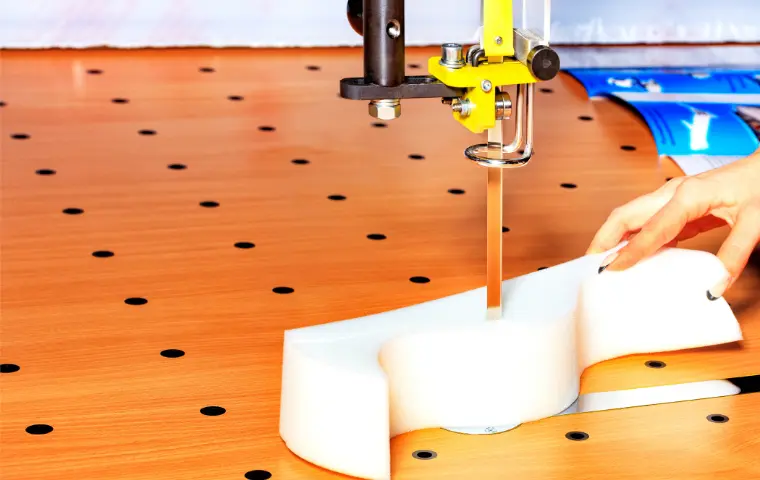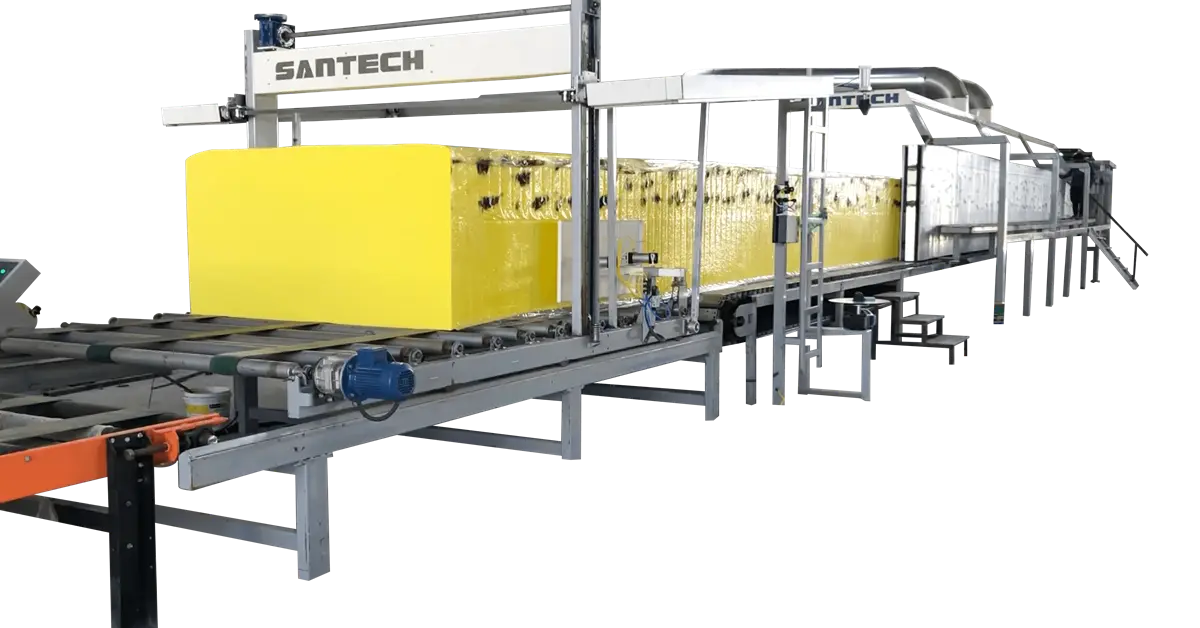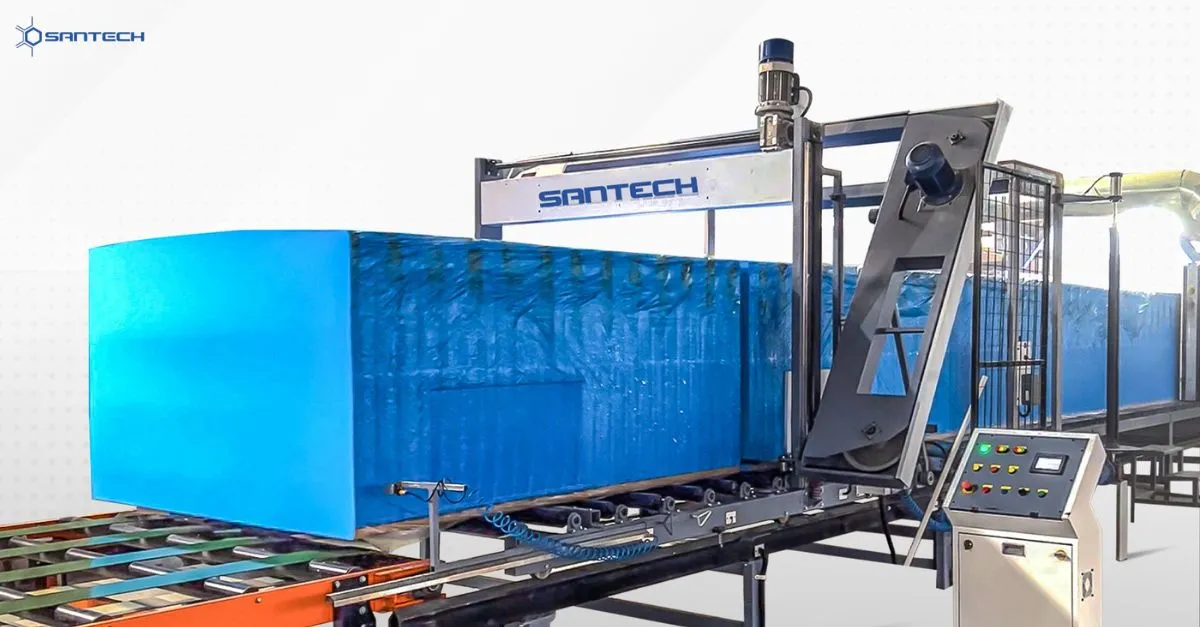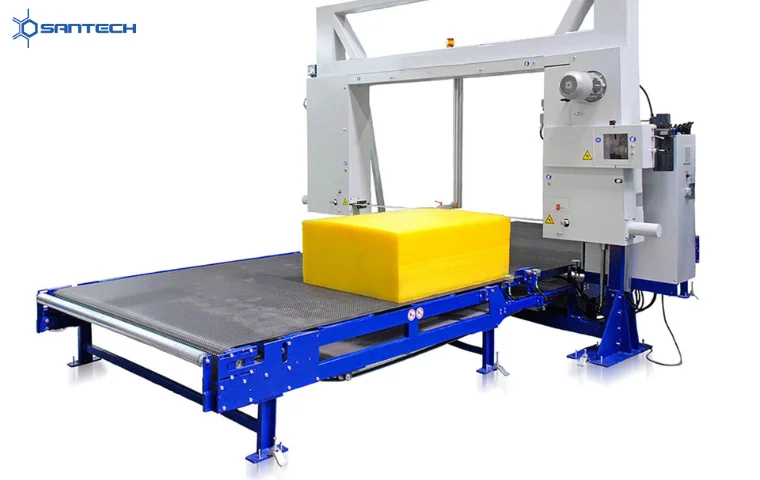The foam production business demands higher production efficiency and quality, as these elements capture the customers. Therefore, foam sheet cutting machines are becoming invaluable assets in the process, bringing precision and speed to produce foam products that were not available before in better quality. These machines enable foam manufacturers to meet customers’ demands for soft foam products, from mattresses to packaging material requirements.
However, like all sophisticated machinery, foam-cutting machines are subject to setbacks, which might limit their performance. Having a skilled professional or worker at the facility can reduce the degree of impact of these issues, but you need to impart training to your workers on how to resolve the issues. This blog will help you identify and fix common problems with foam-cutting machines by giving insights and solutions that keep your production line from moving.
Common Problems In Foam Sheet Cutting Machines
Issues in the machinery can affect your foam production process, and knowing how to troubleshoot the common issues in the foam sheet cutting machines can significantly increase their efficiency. We will explain to you the common problems that arise while working with the foam-cutting machines and how you can resolve them.
1. Inconsistent Thickness Of Foam Sheet
The other common problem is inconsistent thickness in the foam sheets being cut. The reason for this is majorly irregular blade positioning or machine setting. These differences in consistency result in poor-quality foam sheets and will cause material waste. To prevent this from happening, you must ensure the proper positioning of your blade before every cutting sheet.
2. Overheating Of Cutting Unit
The cutting unit in a foam cutting machine may overheat sometimes. It is prone to overheating due to continuous working or the unavailability of an adequate cooling system. Overheating will damage the machine components and affect the quality of the foam cut, leading to melting or deformation. To curb this problem, use the cutting unit according to the machine manufacturer’s instructions and avoid overusing it.
3. Displacement & Periodic Movement Of Foam Block
Poor anchorage of the foam block before cutting may displace them and result in abrupt cut sheets. This issue could be due to insufficient suction of the foam block on the table. To resolve this issue, ensure that the vacuum system of the cutting tables properly captivates the foam blocks during the sheet-cutting process.
4. Uneven Blade Marks On Foam
If the foam has uneven blade marks, the blades are either not sharp or not in a straight line. This will result in degraded foam sheet aesthetics and quality. The structural integrity of the sheets would also be compromised, making the product less ideal for use in mattresses or packaging sheets. Ensure that the blades are sharpened and properly aligned before cutting sheets out of foam blocks.
5. Vibrations In Grinding Unit
The source of vibrations may be caused by the imbalance of some components or deformation of the grinding surface, which produces roughness on the blade and impacts the foam sheets’ quality and the machine’s efficiency. Get the grinding unit repaired or replaced if the damages are beyond repair.
6. Unnecessary Stopping Down Of Machine
Sometimes, machines may stop unwittingly, interfering with the production schedule and lowering the effectiveness of your business. This may be because of a system failure, electricity cuts, mechanical component failure, or software-related bugs. Check the power supply and contact the technician and facility manager to resolve the issue.
7. Excessive Noise From The Table
An unusually high level of noise emanating from the machine table often indicates mechanical misalignment. This not only points toward the possibility of machine damage but could also be due to faulty bearings that move other parts. Properly lubricate all the necessary components so that the noise can be eliminated or reduced to a certain extent.
Keeping Foam Sheet Cutting Machines In The Best Condition
Keeping all the machinery in the best possible condition separates industry leaders from others. If you want to be the leading foam manufacturer, you must maintain your machines in the most efficient conditions to make your production process seamless. Let’s look at how you can keep your foam sheet-cutting machines in the best shape.
1. Periodic Maintenance
The sheet-cutting machine should be serviced at periodic intervals to maintain its operational efficiency. This is the only way to ensure it always remains in the best condition. When scheduling the maintenance of these machines, you can curb minor problems that can be fixed before they develop into bigger ones.
2. Lubrication & Calibration
If properly lubricated, the moving parts experience less friction and wear and tear, increasing the machine’s life. Calibration is putting all components to work in harmony, making for an accurate cut and maintaining foam quality. Calibrate the components in action while cutting to get the best-quality foam sheet.
3. Timely Inspection
Ensure that expert technicians perform regular inspections to detect imperfections not visible during routine daily operations. Repair works must be executed without delay, preventing machine downtime and ensuring the equipment’s integrity.
4. Hiring A Professional & Getting Genuine Parts
Most importantly, you should invest in professional service and original parts of your foam sheet cutting machine. The skills and expertise of a quality machine manufacturer may prevent those most common malfunctions, and the genuine parts contribute highly to your machine’s compatibility and reliable functioning.
Conclusion
The need to troubleshoot and maintain a foam sheet-cutting machine is one of the key concerns of any business whose line of operation is foam production and, therefore, seeks to remain competitive with due quality in its products. Thickness, inconsistency in foam sheets, and excessive noise are among the most common problems that negatively impact the production process flow and reduce the quality of the foam products.




